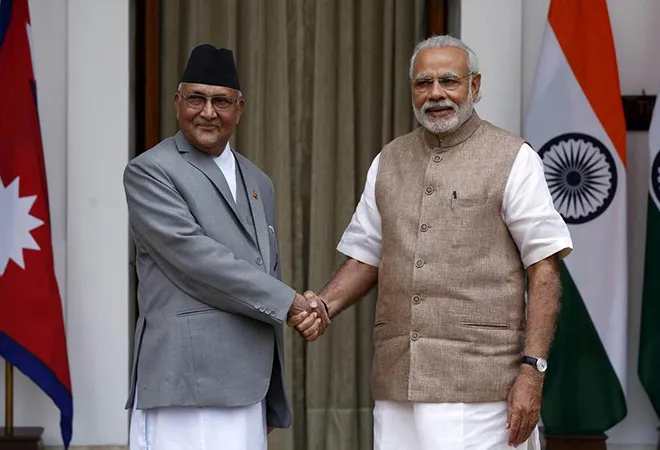-
CENTRES
Progammes & Centres
Location

The recent Indo-Nepal border row now seems to have reached a stage of heightened misunderstanding, leading to unnecessary rival claims. With the statement of Nepalese Foreign Minister Pradeep Kumar Gyawali alleging ‘incoherent attitude’ of the Indian government to resolve the issue, a new phase of delayed responses and prolonged gloom over the border has come to prevail.
Minister Gyawali has been very clear in stating that Nepal has been trying to retrieve the ‘encroached territory’ in Kalapani, Limipiyadhura and Lipulekh through political dialogue. However, the most important point to note here is the validity of the issue for the Indian authorities who have never acknowledged the area and the aforementioned locations as ‘disputed’. In fact, the southern neighbour has been vocal about Nepal ‘politicising’ the boundary with the release of their new political map, after India had done the same, in early November of 2019, in lieu of mentioning Ladakh and Jammu and Kashmir as the newly formed union territories of the country.
India has always been rigid in mentioning the areas as its own, with claims based on several historical documents that date back to the Treaty of Sugauli (1816) and the assessment of the location of River Kali by the Nepal-India Technical Level Joint Boundary Working Group. According to this organization, the River Kali, one of the main sources of the problem, originated from a small rivulet named Pankhagad, lying on the southern portion of Kalapani with the subsequent ridge on the eastern part of this area being the true border, thereby making India’s justification correct. New Delhi, as a reaction to the Nepalese side, has always maintained that the actions taken by the neighbour “do not reflect any seriousness” and is rather “myopic and self-serving to further a limited political agenda”.
Given Lipulekh is the tri-junction between Nepal, India and China, the role of the northern dragon can never be dismissed. This is all the more relevant because of the present border clash between China and India in the Galwan Valley – the India-China Line of Actual Control (LAC) which has also led to loss of lives of many. In this situation, there are high chances of India being side-lined by a Nepal-China dyad. Thus, the vulnerability of India, engulfed or rather surrounded through its northern border, must be dealt with extreme caution and a pinch of salt.
However, the complexity of the situation lies in the contentious Lipulekh Agreement that has been functioning as a kind of a ‘cushion’ for India in the past few years, since 2015, signed between Indian Prime Minister Narendra Modi and Chinese President Xi Jinping. Nepal must realise that China may not be the all-weather friend that it actually claims to be and there is no reason to forget the 41 points joint statement of the treaty, which has clearly violated the sovereignty of Nepal in discussing Lipulekh or even conducting business with India in Taklakot, a small Tibetan township of China. It is also here that a strategically important hill of 6180 meters is present, south of Kalapani, which would undoubtedly give India the access to keep a close watch on the area of concern.
In this entire scenario, despite being well aware, Nepal has never been able to take a step, as China is involved. It must be mentioned at this point that there were several media reports which claimed that important border points in the Nepal-China front have been seized by China. It was also reported that if the river changes its course further, there would be more patches of land encroached by China.
Nonetheless, the Nepalese Ministry of Foreign Affairs has completely denied this stance. There were also several protests in Kathmandu regarding this issue. However, the more common opinion is that Prime Minister K. P Sharma Oli is not ready to sabotage its relationship with China as it is not only benefitting from the One Belt One Road(OBOR) Initiative but is also gaining substantial support with regard to its tension with India.
Nepal and India must realise the presence of China. This is especially true for Nepal that is a landlocked country and is dependent on both the neighbours for development. However, the fact that Nepal has been favouring China more has become an inevitable fact in recent times, thereby often turning a blind eye to its policies of encroaching foreign land as its own. Nepal must also realise that it has to exist next to India for its geographical contiguity, forever. Thus, maintaining cordiality must always be a priority.
This commentary originally appeared in South Asia Weekly.
The views expressed above belong to the author(s). ORF research and analyses now available on Telegram! Click here to access our curated content — blogs, longforms and interviews.

Sohini Nayak was a Junior Fellow at Observer Research Foundation. Presently she is working on Nepal-India and Bhutan-India bilateral relations along with sub regionalism and ...
Read More +